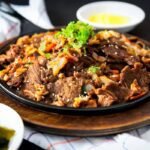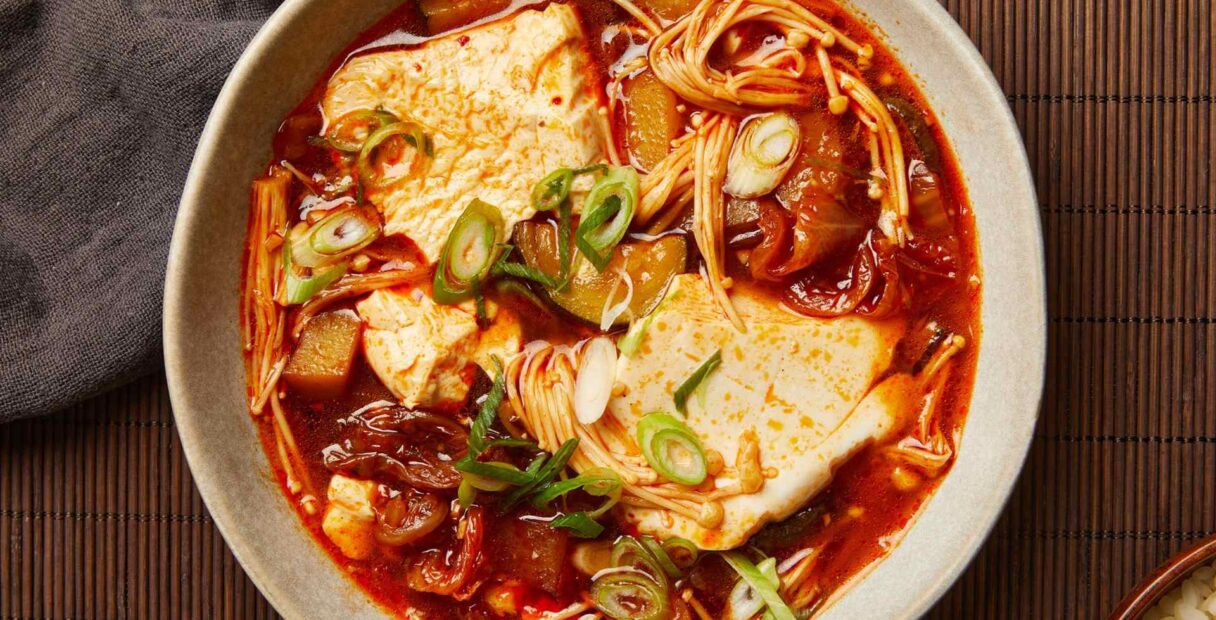
Korean stew (jjigae)
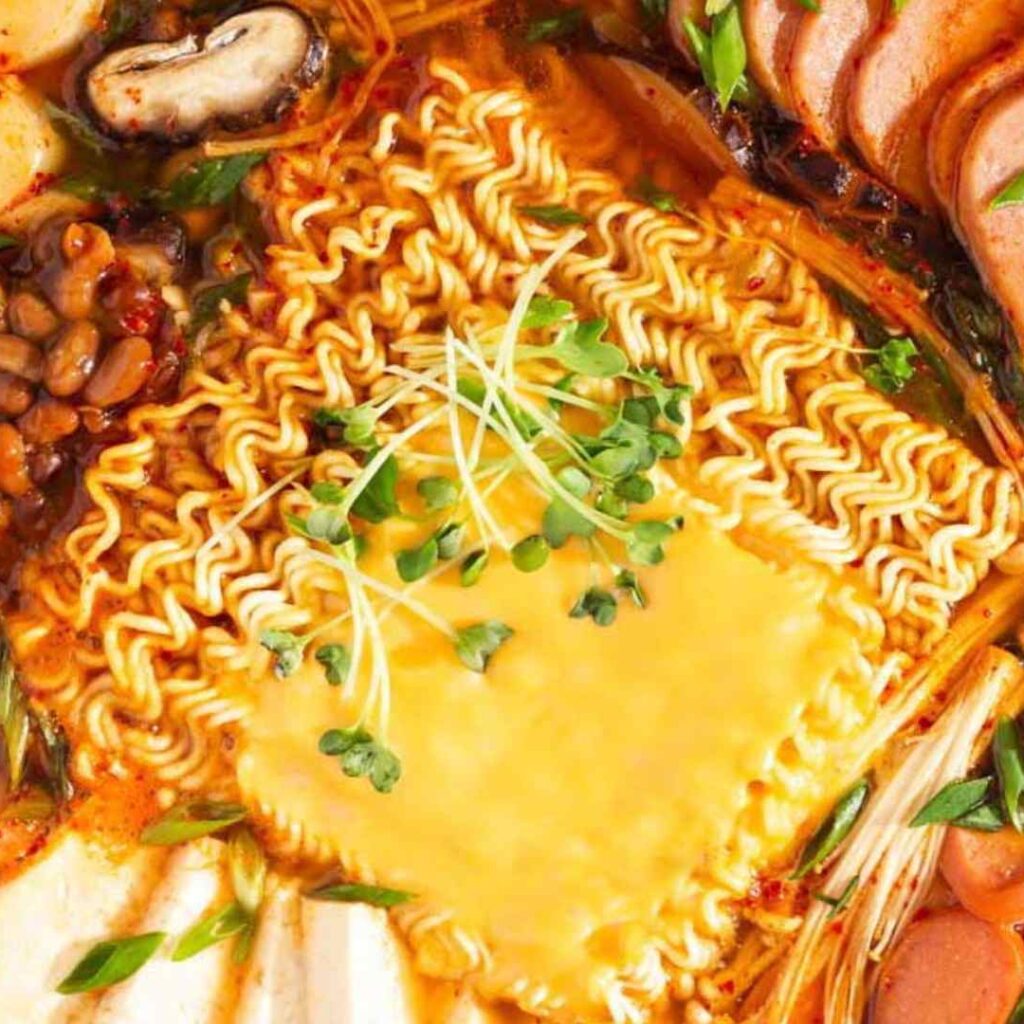
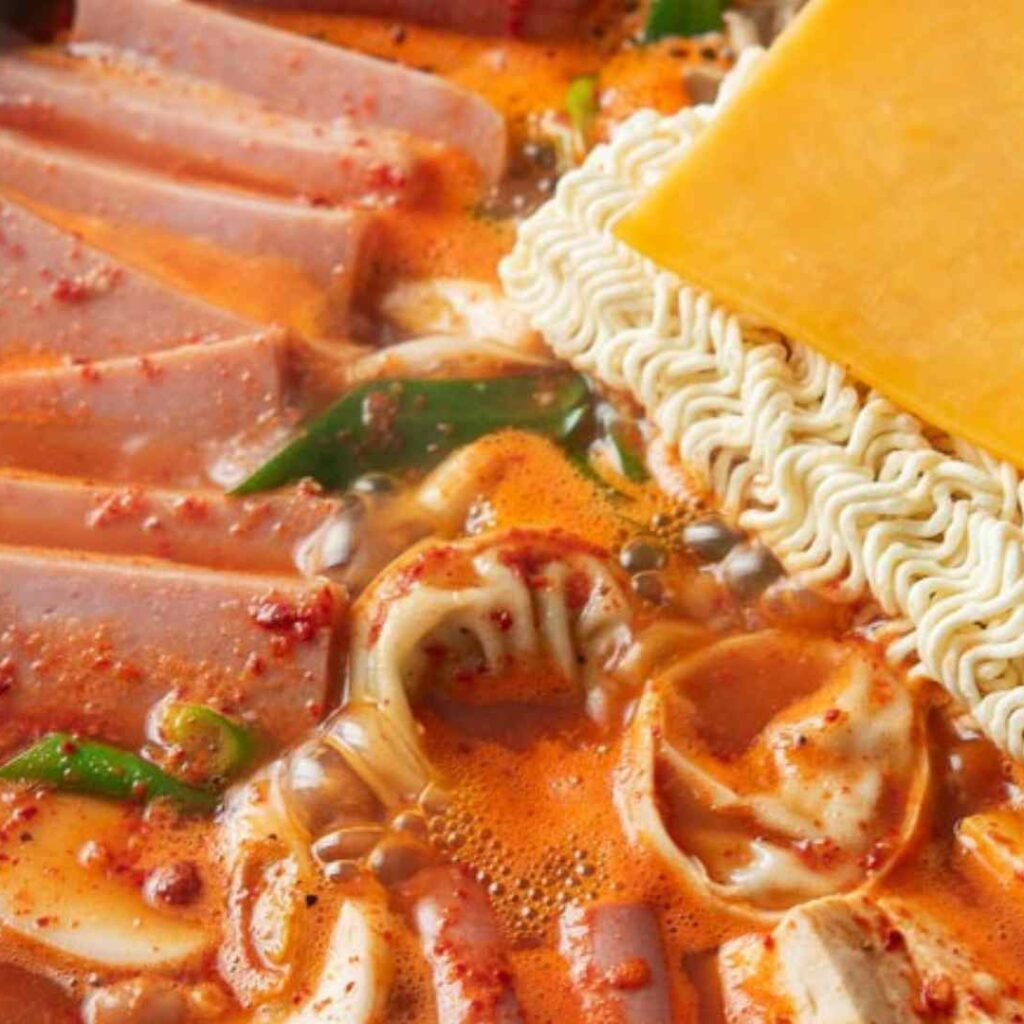
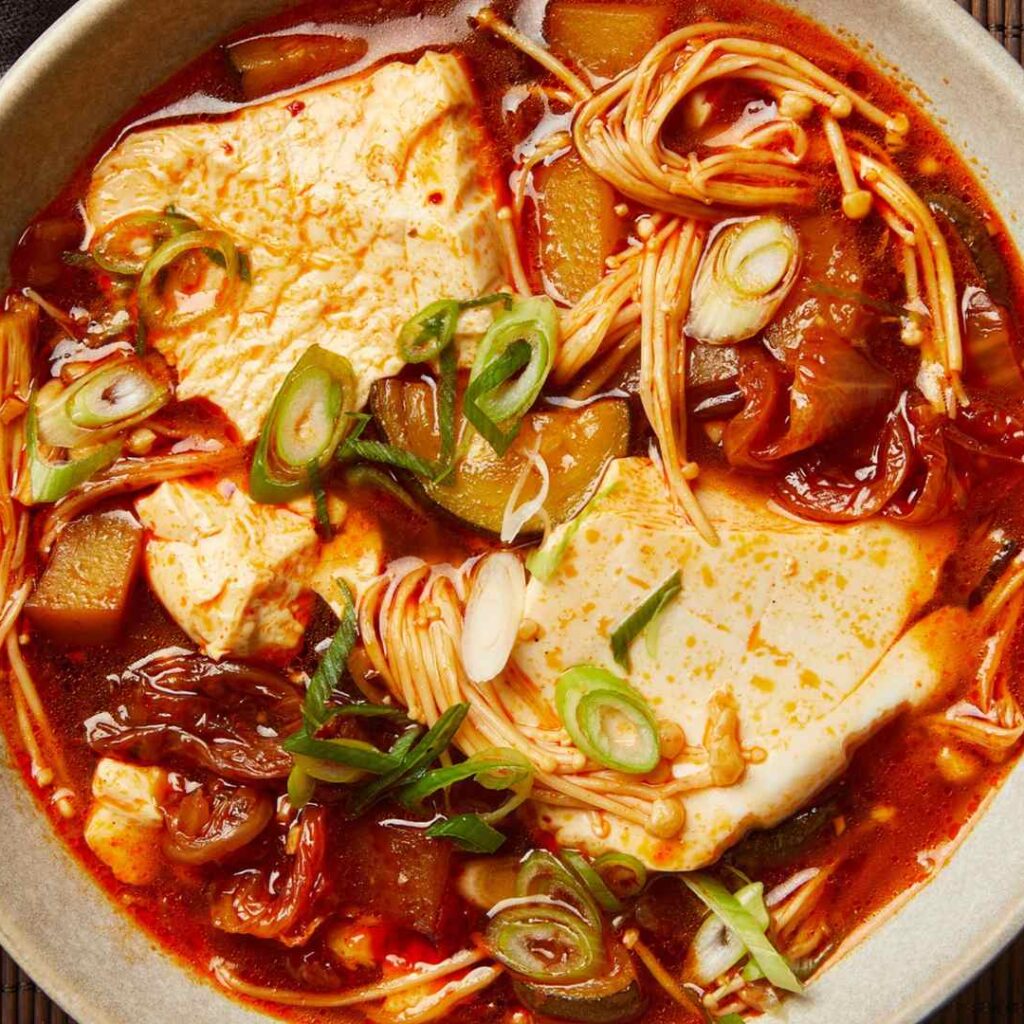
Introduction and History of Korean Stew (Jjigae): A Heartwarming Tradition
In the realm of Korean cuisine, Jjigae emerges as a comforting and flavorful tradition that warms both the body and the soul. Originating from the kitchens of South Korea, Jjigae’s history is a testament to the country’s dedication to creating hearty and nourishing meals that bring families and communities together.
A Hearty Tradition
Jjigae’s history can be traced back to Korea’s rich culinary heritage, where communal meals and flavorsome stews played a central role. The term “jjigae” refers to a variety of stews that are prepared using an assortment of ingredients, often combined to create a wholesome and satisfying dish.
A Medley of Flavors
At the heart of Jjigae lies the medley of flavors and textures that define its essence. Jjigae can include a combination of vegetables, tofu, meat, seafood, and an array of seasonings, creating a symphony of tastes that delight the palate.
A Comforting Ritual
Jjigae carries cultural significance as a comfort food that’s often enjoyed in the company of loved ones. It’s a dish that’s shared among family and friends, symbolizing the warmth and unity that stem from breaking bread together.
A Culinary Tapestry
Over the years, Jjigae has evolved to accommodate various ingredients, dietary preferences, and regional variations. From kimchi jjigae to doenjang jjigae, each stew tells a unique culinary story while remaining true to the spirit of nourishment and togetherness.
Passed Down Through Generations
The history of Jjigae is a narrative of family recipes, shared techniques, and the passing down of culinary wisdom from one generation to the next. As grandmothers and mothers imparted their knowledge, the stews evolved while retaining the heartwarming essence that defines them.
Conclusion
Korean Jjigae isn’t just a dish; it’s a journey through time, flavor, and tradition. With its origins in the heart of Korean kitchens and its presence on tables that foster unity, Jjigae embodies the essence of hearty meals that bring families and friends together. As you savor the rich stews, brimming with an array of ingredients and seasoned with history, you’re not just indulging in a meal; you’re experiencing the history, heritage, and heartwarming tradition that Jjigae carries with every comforting spoonful.
- Serves: 2 People
- Prep Time: 15min
- Cooking: 20 minutes
- Difficulties: easy
Ingredients
For Cooking
- 1 cup tofu cubed
- 1/2 cup kimchi, chopped
- 1/2 cup sliced pork or beef
- 1/4 cup sliced mushrooms
- 1/4 cup sliced onions
- 2 cups anchovy beef broth
- 2 tablespoons Korean red pepper paste (gochujang)
- 1tablespoon Korean red pepper flakes (gochugaru)
- 2cloves garlic minced
- 1green onion chopped
- 1teaspoon soy sauce
- Salt and pepper to taste
For Dressing
Nutritional Information
-
Calories
250 -
Total Fat:
16g -
Saturated Fat
4g -
Cholesterol
35mg -
Sodium
1200mg -
Total Carbohydrates
15g -
Dietary Fiber:
3g -
Sugars:
6g -
• Protein:
15g
Procedure
Conclusion: Savor the heartwarming essence of Korean cuisine with a steaming bowl of jjigae. This comforting stew brings together a medley of flavors and textures, creating a culinary experience that embraces the senses. From the classic pork and kimchi combination to the seafood-laden variation, jjigae offers a versatile canvas for your creativity. Indulge in the warmth of Korean culture as you prepare this stew in your own kitchen, and share its nourishing goodness with loved ones
-
Mark As Complete
In a pot, heat sesame oil and sauté minced garlic until fragrant.
-
Mark As Complete
Add sliced pork or beef and cook until browned.
-
Mark As Complete
Stir in red pepper paste (gochujang) and red pepper flakes (gochugaru).
-
Mark As Complete
Pour in anchovy or beef broth and bring to a boil.
-
Mark As Complete
Add cubed tofu, chopped kimchi, sliced mushrooms, and sliced onions.
-
Mark As Complete
Season with soy sauce, salt, and pepper to taste. Simmer for 10-15 minutes.
-
Mark As Complete
Garnish with chopped green onions before serving.
Dawood Ali Mian
Chef Dawood brings a wealth of experience and a diverse culinary background to our kitchen. His culinary training spans the globe, from classic French techniques to contemporary fusion cuisine. Drawing inspiration from both traditional and modern culinary traditions, Chef Dawood’s creations are a harmonious blend of flavors and textures that tantalize the palate.
You also might like
No recipe were found.

